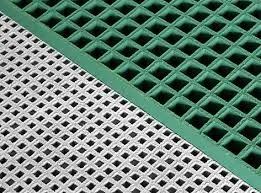
-
 Afrikaans
Afrikaans -
 Albanian
Albanian -
 Amharic
Amharic -
 Arabic
Arabic -
 Armenian
Armenian -
 Azerbaijani
Azerbaijani -
 Basque
Basque -
 Belarusian
Belarusian -
 Bengali
Bengali -
 Bosnian
Bosnian -
 Bulgarian
Bulgarian -
 Catalan
Catalan -
 Cebuano
Cebuano -
 China
China -
 China (Taiwan)
China (Taiwan) -
 Corsican
Corsican -
 Croatian
Croatian -
 Czech
Czech -
 Danish
Danish -
 Dutch
Dutch -
 English
English -
 Esperanto
Esperanto -
 Estonian
Estonian -
 Finnish
Finnish -
 French
French -
 Frisian
Frisian -
 Galician
Galician -
 Georgian
Georgian -
 German
German -
 Greek
Greek -
 Gujarati
Gujarati -
 Haitian Creole
Haitian Creole -
 hausa
hausa -
 hawaiian
hawaiian -
 Hebrew
Hebrew -
 Hindi
Hindi -
 Miao
Miao -
 Hungarian
Hungarian -
 Icelandic
Icelandic -
 igbo
igbo -
 Indonesian
Indonesian -
 irish
irish -
 Italian
Italian -
 Japanese
Japanese -
 Javanese
Javanese -
 Kannada
Kannada -
 kazakh
kazakh -
 Khmer
Khmer -
 Rwandese
Rwandese -
 Korean
Korean -
 Kurdish
Kurdish -
 Kyrgyz
Kyrgyz -
 Lao
Lao -
 Latin
Latin -
 Latvian
Latvian -
 Lithuanian
Lithuanian -
 Luxembourgish
Luxembourgish -
 Macedonian
Macedonian -
 Malgashi
Malgashi -
 Malay
Malay -
 Malayalam
Malayalam -
 Maltese
Maltese -
 Maori
Maori -
 Marathi
Marathi -
 Mongolian
Mongolian -
 Myanmar
Myanmar -
 Nepali
Nepali -
 Norwegian
Norwegian -
 Norwegian
Norwegian -
 Occitan
Occitan -
 Pashto
Pashto -
 Persian
Persian -
 Polish
Polish -
 Portuguese
Portuguese -
 Punjabi
Punjabi -
 Romanian
Romanian -
 Russian
Russian -
 Samoan
Samoan -
 Scottish Gaelic
Scottish Gaelic -
 Serbian
Serbian -
 Sesotho
Sesotho -
 Shona
Shona -
 Sindhi
Sindhi -
 Sinhala
Sinhala -
 Slovak
Slovak -
 Slovenian
Slovenian -
 Somali
Somali -
 Spanish
Spanish -
 Sundanese
Sundanese -
 Swahili
Swahili -
 Swedish
Swedish -
 Tagalog
Tagalog -
 Tajik
Tajik -
 Tamil
Tamil -
 Tatar
Tatar -
 Telugu
Telugu -
 Thai
Thai -
 Turkish
Turkish -
 Turkmen
Turkmen -
 Ukrainian
Ukrainian -
 Urdu
Urdu -
 Uighur
Uighur -
 Uzbek
Uzbek -
 Vietnamese
Vietnamese -
 Welsh
Welsh -
 Bantu
Bantu -
 Yiddish
Yiddish -
 Yoruba
Yoruba -
 Zulu
Zulu
Exploring the Applications and Innovations of GRP Grating in Modern Industries
Understanding GRP Gratings A Comprehensive Overview
Glass Reinforced Plastic (GRP) gratings, also known as fiberglass gratings, have revolutionized various industries due to their unique properties and advantages. Designed to offer strength, durability, and lightweight characteristics, GRP gratings are increasingly utilized in environments where traditional materials may falter. This article delves into the composition, benefits, applications, and maintenance of GRP gratings.
Composition and Manufacturing
GRP gratings are made from a combination of glass fibers and a resin matrix, usually polyester or vinyl ester, which provides the inherent qualities of strength and corrosion resistance. The manufacturing process of GRP gratings involves drawing glass fibers and embedding them within a resin to create a composite material. The resulting structure is typically assembled in a grid pattern, forming a lightweight yet strong surface that can withstand heavy loads.
The production of GRP gratings can be adapted to different specifications and requirements. Custom sizes, colors, and load-bearing capacities can be achieved, making them suitable for a wide range of applications across various sectors.
Advantages of GRP Gratings
One of the most significant advantages of GRP gratings is their exceptional corrosion resistance. Unlike traditional metal gratings, which can succumb to rust and decay, GRP gratings retain their integrity even in harsh environments. This makes them ideal for chemical processing plants, wastewater treatment facilities, and marine applications.
Additionally, GRP gratings are non-conductive and do not generate sparks, ensuring safety in hazardous environments such as oil rigs and power plants. Their lightweight nature simplifies installation, allowing for quicker deployment and reduced labor costs. GRP gratings are also resistant to UV rays, minimizing fading and degradation from sunlight, which is particularly beneficial for outdoor applications.
Furthermore, the open grid structure of GRP gratings allows for effective drainage and airflow, reducing the risk of water accumulation and providing a safe working surface. Their slip-resistant surface can be enhanced further by incorporating additional textures, making them ideal for walkways and platforms where safety is paramount.
grp grating

Common Applications
GRP gratings find widespread use across numerous industries. In construction, they are employed as flooring solutions for walkways, platforms, and staircases. The chemical industry relies on GRP gratings for bunded areas, chemical storage tanks, and as walkways in corrosive environments.
In the marine sector, GRP gratings are utilized on docks, piers, and boat ramps where resistance to saltwater and UV exposure is critical. They are also an excellent choice for wastewater treatment facilities, where their ability to withstand harsh chemicals and wet conditions is indispensable.
Additionally, GRP gratings can be found in the food processing industry, where hygiene and easy cleaning are essential. Their non-porous surface prevents bacterial growth, making GRP gratings a preferred choice for food handling areas.
Maintenance and Longevity
One of the standout features of GRP gratings is their low maintenance requirement. Regular cleaning is often sufficient to maintain their appearance and functionality. Unlike metal gratings, there is no need for protective coatings or regular treatments to prevent corrosion.
When properly installed, GRP gratings can last for decades, offering a long service life and reducing the need for frequent replacements. Their resilience and durability make them a cost-effective alternative in the long term.
Conclusion
In summary, GRP gratings offer a multitude of benefits that make them an excellent choice for various applications across different industries. With their robust design, corrosion resistance, and lightweight properties, they provide a safe and reliable solution where traditional materials may fall short. As industries continue to evolve and seek efficient materials, GRP gratings remain at the forefront of innovation and utility, proving that they are not only practical but essential in modern engineering and construction.









